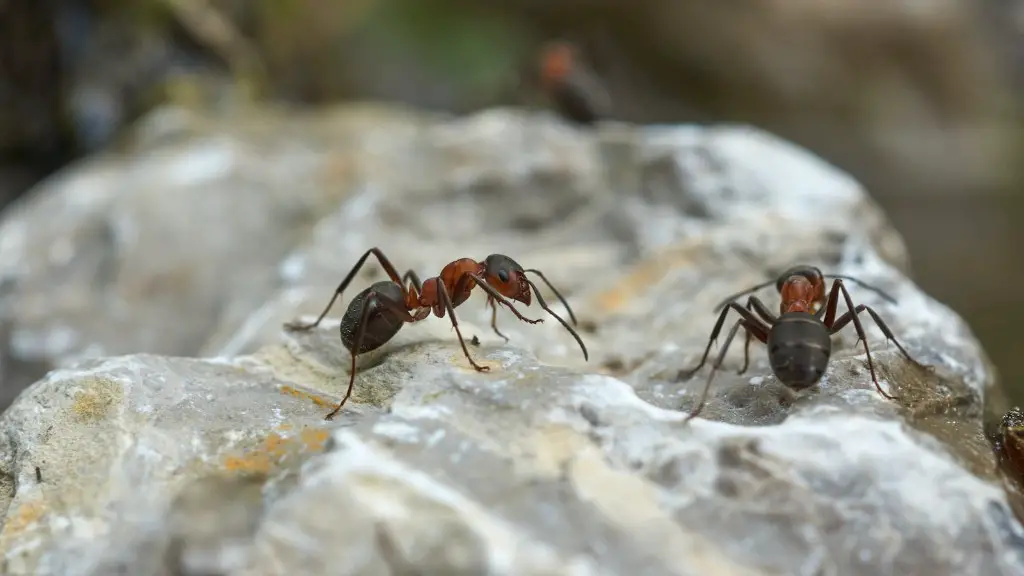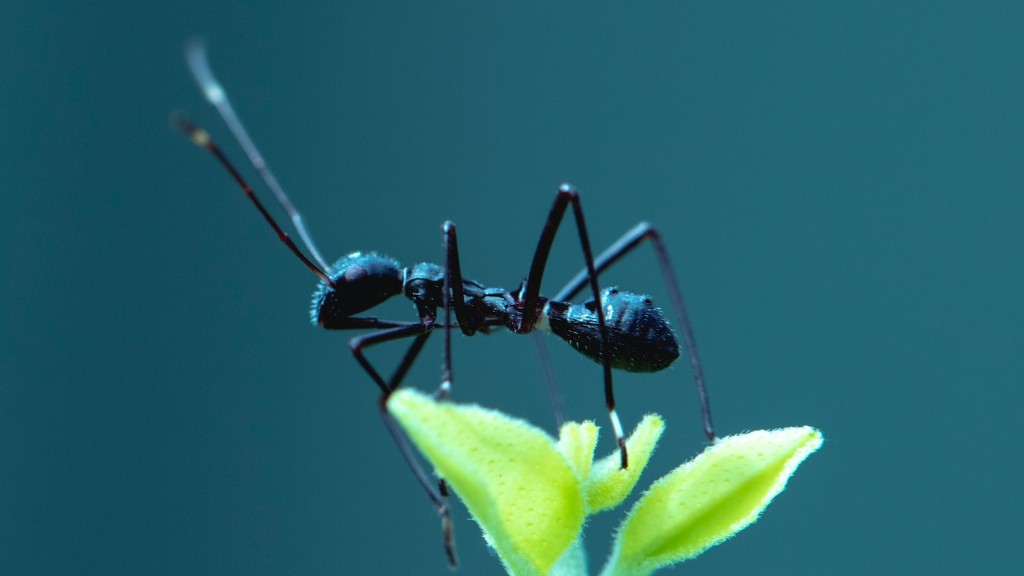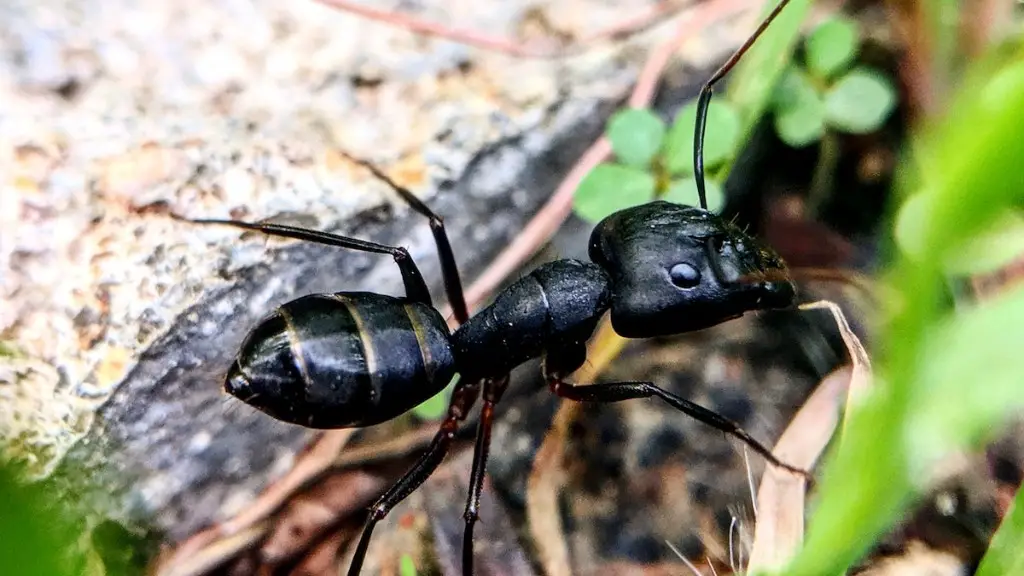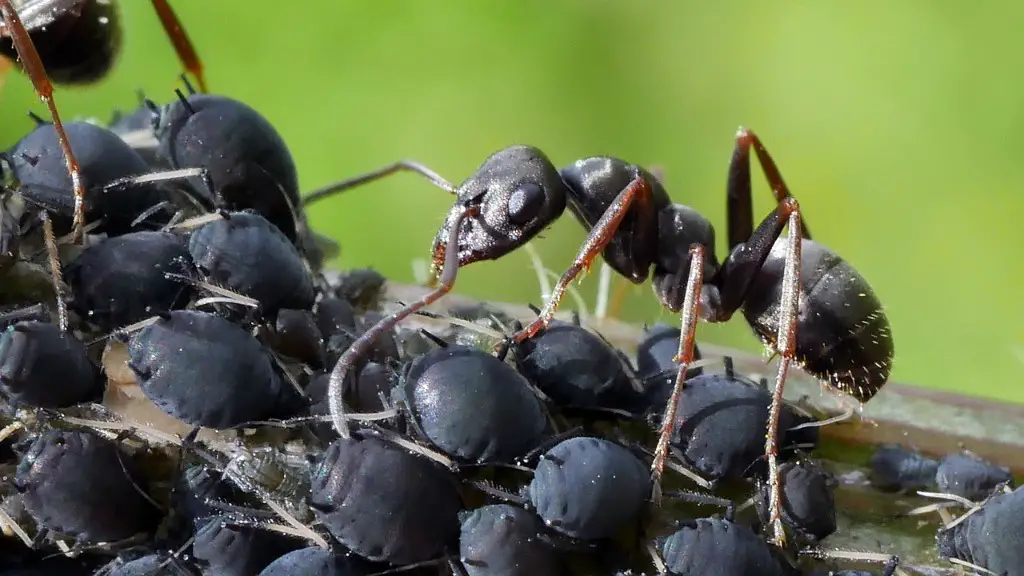Identifying the Type of Ants
Before getting rid of the ants on the lawn, it is essential to identify the type of ant. Each species of ant will require different strategies in order to get rid of them. Common types of ants include fire ants, acrobat ants, field ants, and odorous house ants. Fire ants are usually red or black and are about 1/4-inch in size. They typically make mounds in the lawn and can cause small stings. Acrobat ants are usually black and are 1/8-inch in size, and they will form a pyramid shaped mound. Field ants range in color from black to brown, and they are about 3/16-inch in size and will have grass thatch around their mounds. Odorous house ants are dark brown or black and are typically less than 1/8-inch in size. They tend to stay in the ground and are identified by their strong and pungent smell.
Removing the Ants with Soapy Water
One way to get rid of the ants on the lawn is to use soapy water. This solution is typically made from one part vinegar, one part water, and two to three tablespoons of liquid dish soap. This can be sprayed directly onto the ant mounds and should quickly kill the ants. This process can be repeated as needed and should eventually get rid of the ants on the lawn.
Getting Rid of Ants with Bait Stations
Another way to get rid of the ants is to set up bait stations. Bait stations are a type of trap that can be placed near the ant mounds. These traps contain food that will attract the ants, and the ants will eventually bring the food back to the nest and share it with the other ants. When they do this, they will be infected by the poison in the bait and will eventually die, reducing the number of ants on the lawn.
Removing the Ant Habitats
Removing the ants’ habitats is also a way to get rid of the ants. Ants will typically build their habitats near objects such as rocks, logs, and plants. It is important to remove these materials (if possible) from the property to reduce the chances of the ants building new habitats.
Preventing Ants from Entering the Lawn
In addition to removing the existing ants, it is important to prevent new ants from entering the lawn. This can be done by ensuring that the grass is mowed regularly and that any cracks, crevices, and gaps in the soil are filled. Additionally, avoiding making piles of wood, trash, and other materials near the lawn can also help keep ants away.
Using Insecticides
Insecticides can also be used to get rid of the ants on the lawn. These products contain chemicals that will kill the ants, but it is important to read the instructions carefully and follow them precisely. It is also important to ensure that the products are safe for use around children and pets.
Sprinkling Diatomaceous Earth
Diatomaceous earth is a white powder that is made from fossilized phytoplankton and can be sprinkled around the lawn to get rid of ants. This powder is composed of sharp, microscopic silica particles that will cut through the ants’ exoskeletons and will eventually kill them. It is important to read the instructions carefully and follow them precisely when using this product.
Encouraging Ant-Friendly Insects
Encouraging ant-friendly insects is also an effective way to keep the ants away from the lawn. These insects include predatory ground beetles, parasitic wasps, and some types of lacewings. These insects will attack and eat the ants, reducing the number of ants that are on the lawn.
Soil Changes
Making changes to the soil is another way to get rid of the ants. This includes tilling the soil and creating mounds and ridges. This will ensure that the soil drains properly and that it is more difficult for the ants to create tunnels. Additionally, changing the soil composition to be more acidic can also make it difficult for the ants to survive.
Increasing Air Flow and Sunlight
Increasing the air flow and sunlight around the lawn can also make it difficult for the ants to survive. This can be done by pruning trees and shrubs around the property and by making sure that the grass is mowed regularly. This will help to disrupt the ants’ nests and reduce their populations.
Disturbing the Ants
Disturbing the ants can also be an effective way to get rid of them. This can be done by pouring boiling water directly onto the ant mounds, stirring up the soil around the ant mounds with a stick, or pouring salt directly onto the ant mounds.
Using Biological Control
Biological control is another option for getting rid of the ants on the lawn. This involves introducing a predator that will feed on the ants, such as predatory nematodes. These small nematodes will attack and eventually kill the ants, reducing the population on the lawn.
Use of Chemical Repellents
Chemical repellents, such as bug sprays and insecticides, are another way to get rid of ants on the lawn. However, it is important to read the instructions carefully and follow them precisely when using these products, as they can be harmful to humans and other animals. Additionally, these products can be expensive and can have a negative impact on the environment.
Creating Ant-Repellent Mixtures
Creating ant-repellent mixtures is also an effective way to keep ants away from the lawn. This can be done by mixing peppermint oil, cloves, and cayenne pepper in a spray bottle and then spraying the mixture directly onto the ant mounds. This will create an uncomfortable environment for the ants and will eventually get rid of them.
Maintaining the Lawn
Finally, it is important to maintain the lawn in order to keep the ants away. This includes removing debris, such as leaves and branches, from the lawn and keeping it clear of objects that can be used by the ants as habitats, such as rocks and logs. Additionally, it is important to mow the lawn regularly and to keep it well-watered in order to discourage the ants from taking up residence.



